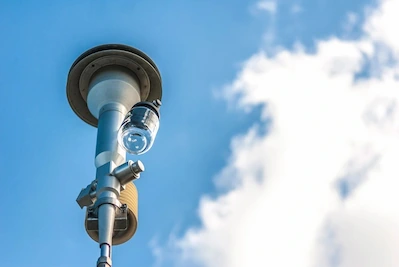AMBIENT AIR QUALITY MONITORING

Here, We’ll introduce you to ambient air quality monitoring, detail the numerous tests available, and explain its relevance to human health, Environmental protection, Regulatory Compliance, etc.,
What is Air Quality Monitoring and Ambient Air Quality Monitoring?
Air quality monitoring consists of measuring polluting substances in the air to evaluate its cleanliness levels. The process identifies health-hazardous dust (particulate matter), dangerous atmospheric gases (carbon monoxide, sulfur dioxide, nitrogen oxides) and volatile organic compounds (VOCs). Air quality monitoring helps organizations follow environmental rules while enabling the creation of new systems to control pollution.
The process of ambient air quality monitoring consists of measuring pollution in wide open spaces that comprise urban areas industrial zones alongside residential districts. Air quality measurements from industrial plants factories and traffic alongside construction emissions and natural sources enable agencies to check whether air standards match those established by authorities including the Central Pollution Control Board (CPCB) and National Ambient Air Quality Standards (NAAQS).
The process of continuous air pollution monitoring enables governments industries and environmental agencies to take appropriate steps towards pollution reduction and enhanced public health protection and environmental quality improvement.
Why Ambient Air Quality Monitoring?
Ambient air quality monitoring is probably the most critical method of identifying our environmental problems. Collecting and sampling air tests to see if particular pollutants and chemicals affect bad air quality. Measuring the pleasantness of the ambient air is significant for several reasons:
Public Health:
The public health ensures that there are no allergies and dangerous chemicals in the air we breathe.
Environmental Protection:
It monitors pollution effects on plants, animals, and ecosystems.
Compliance with regulations:
All levels of government, business and the community too have to comply with these rules, directives, and guidelines on pollution control and air quality maintenance.
Scientific Research:
The information is used for research on air quality trends and effects.
Benefits of Monitoring Air Quality
Help in the detection and control of such emissions that could affect human life. Many types of research confirm the interlink between pollution and illness. Researchers found that air pollution decreases lung function and causes more heart attacks. EPA states that high air pollution levels affect asthmatics and people with lung and heart problems mainly. People of all ages, old and young, are highly susceptible to air pollution-related health problems.
Human health is also dependent on the concentration level of pollutants in the air, the amount of polluted air we inhale and the state of our health. Air Quality Monitoring helps avert health hazards. Therefore, the data obtained from the monitoring process plays a vital role in determining and controlling air pollution impacts on public health.
Air Quality Index
The EPA and other agencies use the Air Quality Index to communicate with the public about the present status of the air quality and associated health risks due to these air pollution rates. Equivalently AQI is an indicator for measuring and leveling off a given area by the density of polluted air or concentration of toxic substances it contains.
| AIR QUALITY INDEX | AIR QUALITY |
|---|---|
| 0 to 50 | Good |
| 51 to 100 | Moderate |
| 101 to 150 | Unhealthy for Sensitive Groups |
| 151 to 200 | Unhealthy |
| 201 to 300 | Very unhealthy |
| 301 to 500 | Hazardous |
As a result, by employing ambient air quality monitoring data one can judge whether an area is or not up to Central Pollution Control Board (CPCB) and WHO air standards.
They have physical, chemical and microbiological tests for different aspects of testing ambient air quality designed by the CVR Labs. The following tests are performed for Ambient Air Quality Testing:
Ambient Air Quality Monitoring Testing Parameters
| Particulate matter (PM2.5) | Carbon monoxide | Suspended Particulate matter (SPM) | Carbon dioxide |
| Hydrogen Sulphide | Poly Aromatic Hydrocarbons (PAH) Benzo(a)Pyrene(BaP) | Temperature | Noise |
| Illumination | Humidity | Volatile Organic Compounds as per EPA 502/524 mix | Chlorine |
| Benzene, Toluene & Xylene | Fluorides | Arsenic as As | Ammonia |
| Lead as Pb | Sulphur dioxide | Oxygen | Particulate matter (PM10) |
| Heat Stress |
These measures are important in industrial sites, city centers, and neighborhoods. If you are interested in finding out more about how we help people to protect the air quality around them, please feel free CONTACT TO US.
